The Superhero Equation
I love connections and correlation. I communicate entirely in comparisons. If you’ve ever heard me describe something that I enjoyed, I cannot help explaining it as a combination of two things that I think/hope you already like. To me, that is a positive thing. To me, that’s praise. To me, finding a character or a story that I can relate to, likening myself to a character I admire in a story I enjoy, that’s the closest thing to a self-compliment that I ever get. So just to make things clear from the start, parallels are fantastic, and this blog post comes from a place of positive fascination, and not of negative criticism. With that said?
Modern superhero stories follow the same pattern.
One of the drums I have been banging for years is that The CW keeps following a formula. Season 1 of a show has the same kind of villain and the same kind of themes as Season 1 of all the other shows, and so does Season 2, and Season 3, and so on. I find this immensely cool, because it lets me predict what direction the story might be going on, and I love me some wild internet speculation. But the more I think about it – as I was doing in a comments section about twenty minutes ago – the more that I realise this isn’t just a formula that The CW follows, you see it in the DC movies, in the MCU, and even both sets of X-Men movies.
What the heck am I on about? Let me explain.
Disclaimer: I will be painting in broad strokes here, but if you haven’t watched The Flash I may ever so slightly spoil some of the clunky villain reveals.
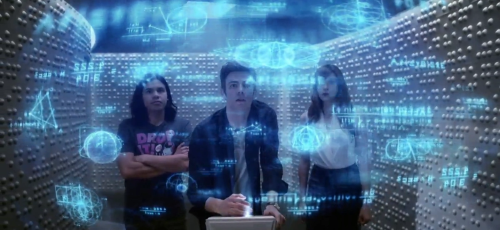
Stage 1 – The Reverse
There is a whole lot to this theory that I will happily go into excruciating detail about over the beverage and/or messenger of your choice, but it’s simplest if we focus on the villains. They are the challenge that the hero has to face, and that’s ultimately what drives the theme of the season or movie.
For Stage 1, there are three main pieces to the villain. They have a meaningful, often family-adjacent, often parent-adjacent relationship with the hero. They have an evil plan, and that evil plan is already in motion long before the hero shows up. They are the “Reverse” of our hero: their equal and opposite.
The best example of this comes from Season 1 of The Flash, where the Flash goes up against the Reverse-Flash. This is both the character who killed his mother, and a character whose alter ego becomes something of a mentor figure, so it hits that first criteria with a double tap. Their evil plan (to get back to the future) doesn’t just predate the hero, it ends up causing his powers in the first place, as well as creating all of the foes he faces along the way. And they are literally the Reverse-Flash: a term from the comics that collects together all of the evil speedster foes of the various Flashes, many of whom wear a version of Flash’s costume with the emblem flipped and the colours reversed.
But it isn’t just there in The Flash. In Arrow, Oliver Queen faces off against Malcolm Merlyn, his best friend’s and half-sister’s father, with an evil plan to destroy part of the city with an earthquake machine, who runs around as the Dark Archer. On Supergirl, Kara is up against her mother’s evil twin, a fellow Kryptonian who shares her powers, who has an evil plan to mind control the world. The Legends of Tomorrow are up against Vandal Savage, who killed their Captain’s wife and son as well as killing Hawkman and Hawkgirl in a past life, who has an evil plan that has been in motion for thousands of years before they were even born, and whose ability to persist through and affect the events of history is the reverse of their time-saving antics. Black Lightning is up against the man who killed his father, whose powers have the same origin, part of a criminal conspiracy stretching back decades. Batwoman fights her evil twin, who is just as mortal and into dress-up as she is, and whose revenge plot has been brewing away since childhood. Stargirl and her friends are up against the Injustice Society, who killed their parents/predecessors/etc on the Justice Society, and who have some creepy secret society puppeteer plan going on. It even stretches outside of The CW into other Greg Berlanti shows, like Titans, where the villain is Raven’s demonic father and his secret religion hell-bent (pun intended) in unleashing him on the world.
And it doesn’t stop there. In Batman Begins, Henri Ducard is a mentor figure with a plan to tear down the city, and the same League of Shadows training as Batman. In Man of Steel, General Zod is Superman’s equal and opposite, whose plans for terraforming (Kryptoforming?) are what force Kal-El into action. In Wonder Woman, Diana fights her half-brother, whose evil plan is the First World War. Shazam fights someone who has coveted his powers for decades and has a demonic approximation of them. Aquaman fights his half-brother to oppose his plans to wage war against the surface world. And then what about Obadiah Stane, surrogate father and secret war criminal who builds a suit equal and opposite to Iron Man? What about Red Skull, the villainous opposite result of the supersoldier serum, whose evil plan Captain America stumbles across by accident? What about Loki, brother and fellow god, and the machinations that poor dumb Thor is oblivious to? Yellowjacket, the daddy issues jilted mentor turned HYDRA conspirator whose suit is the antithesis of Ant-Man’s? Or Vulture, father of Spider-Man’s love interest and a fellow tech-head, whose heist schemes Peter blunders into? The original X-Men gives us Magneto, with all his unspoken Xavier history and his evil plan to turn mortals into mutants; First Class gives us Sebastian Shaw, who murdered Magneto’s mother and has plans to kickstart World War III.
I could keep going, but you get the gist. Ah, though, you’re probably thinking. These are all origin stories, and it makes sense that an origin story would involve this kind of a villain. After all, if your protagonist and antagonist are equal and opposite, then the only reason the hero wins is because of his heroism! That is a fantastic, and very valid point. But bear with me.
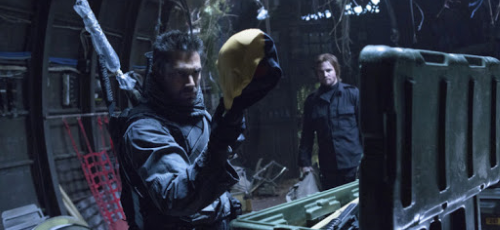
Stage 2 – The Nemesis
Broadly speaking, there are two types of significant foe for a superhero. There is the Reverse, who is their equal and opposite. Reverse-Flash. General Zod. Red Hulk. The same or similar powers, but an opposite disposition. Then there is the Nemesis, whose beef with the hero is personal, but who doesn’t necessarily match (or need to match) the hero’s abilities directly. This is Lex Luthor, the Joker, General Ross.
For a Stage 2, Season 2, Movie #2 villain, only one thing matters: the desire to tear down the hero. It is probably personal, and they probably have minions.
We can’t get a better example here than Deathstroke on Season 2 of Arrow. Here is a man who once referred to Oliver Queen as his brother, but who has been driven to madness, and now seeks to tear down Oliver’s life and his city. The Flash hit us with the double whammy of a Nemesis who is also a bit of a Reverse: an evil speedster who aspires to be Jet Li in The One, and has an army of metahumans from a parallel Earth to back him up. Supergirl goes up against first Cadmus, an alien-hating, Super-hating Luthor-led terrorist group, and then the Queen of Daxam, who hates Krypton for destroying her homeworld and is not super happy about Supergirl banging her son. The Legends of Tomorrow are another Nemesis/Reverse combo: villains cherry-picked from other shows the way that the Legends were, who need the McGuffin that the Legends’ Captain has hidden in order to stop themselves from being erased from time (which is fairly personal). On Titans, they copied Arrow‘s homework so closely that they even used the same villain, only this time (as is a big difference between the two shows) it riffs on a theme of fathers and sons rather than a theme of brothers. Batman v Superman had Lex Luthor (and arguably Batman) in this role, and The Dark Knight had the Joker: you can’t get better examples of this archetype than that. When the dust settles, Black Manta is poised to become this kind of foe for Aquaman 2, and based on the comics at least, both Cheetah and Maxwell Lord fit this niche for Wonder Woman ’84.
And what about Marvel? Captain America faces off against HYDRA, who wants to tear down everything he stands for. Iron Man faces off against Vanko, who sets out to make god bleed; and Justin Hammer who is there for moral support. Spider-Man fights Mysterio, whose objective is to tear down Tony Stark’s legacy. Ultron fills this same role for the Avengers: a lot of people really seem to want to fuck with Tony’s stuff for some reason. Thor fights Malekith, who wants to tear down all of existence, and especially Asgard; and there’s a bonus theme here, because Arrow, The Flash, The Dark World, Titans, and possibly others that I’m not thinking of now feature a loved one dying just to really amp up the “it’s personal” vibe. Both X-Men 2 and Days of Future Past featured villains – Striker and Trask – whose objective was the extermination of mutants; and Striker most certainly fills the Nemesis role for Wolverine.
But this is just “the other type” of villain, right? Of course that’s where they go next, they’re just covering the bases.
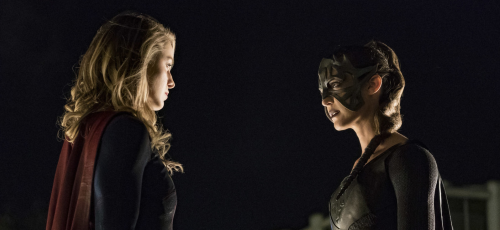
Stage 3 – The Ultimate Evil
This is the part where I begin to regret trying to give each stage a catchy name; but while the name may be shaky, the pattern is still solid.
For Stage 3, the villain is less of an archetype, and more of a statement. This is what you could be if you were completely evil. This is what you could achieve if you treated your powers as power.
Supergirl gave us Reign, someone whose story as a Kryptonian orphan parallels Kara’s: but rather than saving the world, Reign wants to destroy it, and that ruthlessness and villainy seems to make her more powerful than Supergirl can match. Arrow introduced Ra’s al-Ghul, who literally posed this kind of question to Oliver Queen directly: imagine what you could achieve if you embraced your murderous side, and replaced me as the leader of the League of Assassins. The Flash introduces us to what literally is an evil version of Barry Allen, who abandoned his goodness to save the woman he loved, only to end up becoming the one who killed her. The Legends of Tomorrow face off against a time demon, whose minions are actively breaking time to achieve their own ends, something the Legends constantly struggle with wanting to do themselves. Black Lightning faced off against Gravedigger, the “first metahuman”, who embraced the idea that his powers made him superior and entitled him to be in control. You could perhaps argue that Steppenwolf represents this in Justice League as well: this is what it looks like when aliens/metahumans unite to invade the Earth, versus what happens when humanity unites (both in the present and the past) to defend it. (It will be interesting to see whether it fits this niche more or less in the Snyder Cut version!)
On the Marvel side, AIM represents what happens when someone like Tony Stark uses their genius for evil rather than good. Hela is what Thor could be if he actually wanted the throne and was willing to take it. Apocalypse brings out this potential in his Horsemen, and seeks to use his power to rule the world – showing Charles that his powers could be used to achieve it – while Last Stand presents us with a version of the Phoenix who shows Magneto what is possible when one possesses ultimate power, and literally leaves him asking “What have I done?” by the end.
In a lot of cases, this is finale climax territory, so putting the hero up against some kind of ultimate foe makes sense. However, many of these franchises continue, and so does the pattern!
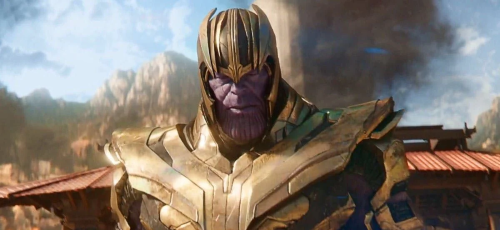
Stage 4 – The Curveball
In Arrow, after three years of facing off against fellow mortals (ish) with weapon skills of some kind, The CW introduced Damien Darhk as a curveball: a character unlike anyone the heroes had previously faced. In this instance, it was someone with magical powers, something that fell far outside the scope of what Team Arrow was accustomed to. On The Flash, it was the Thinker, someone who instead of super-speed had super-intelligence, someone who Barry couldn’t outrun because he’d already been outmanoeuvred. On Supergirl, the villain was Agent Liberty, and racism, Trumpism, and various other isms: not fellow aliens she could punch or blast with her eyebeams, but hearts and minds, fake news, and collective insecurities that weren’t so easily dealt with. The Legends of Tomorrow not only contended with magic and demons, but also with government bureaucracy: with being part of something legitimate rather than rogue mavericks. For Marvel, the curveball is Thanos in Infinity War, or the aliens and Phoenix Force in Dark Phoenix, powers beyond the hope of their comprehension or understanding.
Yeah, this step in the pattern is a little weak, but so are most of The CW’s attempts at a Season 4. Besides, what else can you say aside from “something different than the previous three?” But stick with me, because Stage 5 is wordy and thinky.
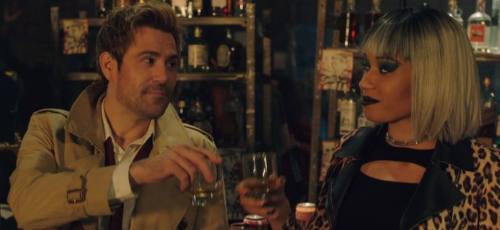
Stage 5 – The Full Circle
Season 5 is (or was) a bit of a magic number in television, because assuming you have ~20 episodes a season, Season 5 is where you hit the 100th episode mark. What The CW does for it’s 100th episode is fantastic, because both the 100th episode and the season it (usually) takes place in really lean into the idea of things coming full circle.
On Arrow, Season 5 was all about Prometheus, a character who became a villain because of something Oliver Queen had done back in Season 1. The 100th episode meanwhile was inside an alien simulation during one of the crossovers, where Oliver lived out a fantasy wedding scenario with his dead ex, and then ended up having a fight against the villain of previous seasons. On The Flash, the 100th episode saw Barry run back in time to retrieve things from previous episodes, while the season at large brought things full circle to Season 1, having Barry settle into the mentor role of Harrison Wells when his daughter shows up from the future: a daughter whose “Damn it, Barry” level meddling with time causes the villain and all sorts of other problems along the way. Supergirl used Mxyzptlk for a bit of a ‘what if?’ 100th episode revisiting her choices re: Lena Luthor and her secret identity, while Season 5 reached back into Season 1 and pulled forward the idea of the D.E.O. as a shady organisation, aliens with secret mind control plans, and various other references and callbacks. While Legends of Tomorrow has slightly shorter seasons and so hasn’t reached it’s 100th episode yet, it did still pull from the past for Season 5: most overtly with Astra from Constantine’s backstory playing a key roll, but more subtly with the idea of fate, and things being destined to happen, something that was a recurring theme back in Season 1 thanks to the Time Masters and Rip Hunter’s frequent “time wants to happen” struggles with saving his loved ones. And rounding out the set, Endgame literally goes full circle for the Avengers and the individual heroes: the time heist, “I am Iron Man”, “everything special about you came out of a bottle”, and so on.
What’s interesting at this point and onwards is that the villain starts to become increasingly irrelevant to the story. Endgame isn’t about Thanos, not in the way that Infinity War was: he’s there to be defeated, and the focus is on how that impacts the heroes – arguably far more than any of the other Avengers movies strove to be. The Flash and Arrow and Supergirl treat their villains as a slow-burn mystery that unravels in the background, while the foreground focuses (like Endgame) on the heroes coming to terms with themselves and who they want to be – mayor, father, friend, and so on.

Stage 6 & 7 – The Continuation
You know another show that sort of follows this pattern? Supernatural. In Season 1 is all about daddy issues, and the Winchesters stumbling into an ongoing nefarious scheme. Season 2 becomes personal, because it’s all about Hell’s plans for Sam. Season 3 introduces Ruby, Bela, and the idea of the Winchesters aligning with and resorting to “evil” methods to try and loophole their way out of Dean’s impending devil deal. Season 4 throws the curveball of “surprise, there are angels!” and Season 5 brings things full circle by showing that everything from the beginning of the show has been leading up to this point.
Then there’s Season 6. This is the point where a show has passed 100 episodes but kept going, leaving the writers and producers to figure out what the heck to do next. Supernatural dug into its own lore, introducing mom’s side of the family and playing around with the origins and mythology of monsters; something that carried through into Season 7’s Leviathan’s arc. People on the internet have a tendency to be overly harsh about these sorts of things, but there’s definitely a gear shift as the show decides which hill to start chugging up next.
Why is this relevant? Because that’s where the MCU is right now, and where both Arrow and The Flash have got to next. The MCU’s equivalent is to dig into its own lore, and spin that off into Disney+ shows. Arrow introduced a cabal of criminals with personal ties to the heroes (like the Masters of Evil), riffing off stray threads left dangling from earlier stories, and The Flash did a similar sort of thing with Black Hole and McCulloch Technologies.
The consistent theme – on The CW at least – is the idea of introducing a buffet of antagonists, which then continue on into Season 7. With Supernatural, it was that Leviathan thread. With Arrow it was (unfortunately) Ricardo Diaz. With The Flash, it looks like this will be Eva McCulloch, who one presumes might spin off into the Rogues or something next year, if they can conjure up enough other Flash foes to fill out the group. There’s also a theme of discord between the heroes: the split between Original Team Arrow and New Team Arrow; the division between Team Flash and Team Citizen; Dean on one hand, Soulless Sam on the other; and so on.
It’s a bit tricky to nail down the specifics here, with only two data points so far, and COVID having lopped off the last few episodes of The Flash, and who knows if Supergirl and Legends of Tomorrow will end up having the same trajectory as they might have otherwise, but the corellations are still sort of there.

Why Does Any Of This Matter?
Well, it doesn’t. Not even remotely. Or maybe I’ve just stumbled across that whole hero’s journey thing that people keep banging on about whenever they discuss Star Wars. But like my obsession with the way the costume department uses the colour blue on things like Arrow or Thor where the principle characters are red and green, it’s something I notice again and again, and I find it real damn interesting.
It leads to some fun speculation, too. Looking at what The CW has previously done, what might be in store next season for Stargirl, or Supergirl, or The Flash? Will there be a team of villains on Legends, and will there be a schism within the team? What kind of villain fits the profile for Spider-Man 3: a Goblin or an Octopus as a “using your genius for evil” character, or Beetle as a mercenary (ab)using Stark tech to hunt down a fugutive Spider-Man? Where in the pattern will movies like Love and Thunder or Black Widow fit, if they even fit at all? If the X-Men movies continued, and they jumped forward another decade, would they have done a Stage 5 redux of X-Men set in 2000?
I could go on for hours. I often do. But even though it doesn’t matter, and even if it’s just a series of elaborate coincidences… it’s still kind of cool, right?